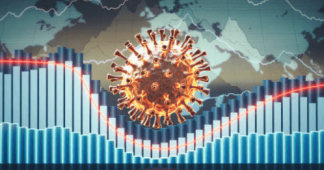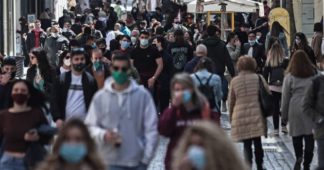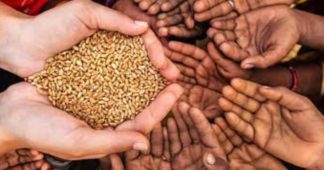May 10, 2023
The figures for both poverty and inequality in Greece are very worrying. According to ELSTAT data, the population at risk of poverty or social exclusion amounts to 26.3% of the country’s population, i.e. 2,722,000 people or 29.1% (3,006,300 people) based on the definition of ELSTAT of 2020.
As it turns out, more than 1 in 4 Greeks are faced with such a risk. In fact, the specific figures refer to 2022 (incomes of 2021), which implies that they do not include the period of the price explosion in energy, electricity, fuel and food, which led to an additional reduction in citizens’ incomes. It is noted that Greece has the second worst performance after Bulgaria among the nine European countries for which data is available.
Global poverty: One in 12 people live in extreme poverty [σχεδιαγράμματα]
Followed by Spain and Latvia with a percentage of 26%, while in the best position is Finland with 16.3%
Households at risk of poverty are estimated at 742,235 out of a total of 4,049,102 households, and their members at 1,945,199 out of a total of 10,399,329 people of the estimated population of the country living in private households.
Children are most at risk
The risk of poverty or social exclusion is higher in the case of children aged 17 and under (28.1%), with their percentage however appearing reduced by 3.9 percentage points compared to 2021 (32.0%).
The percentage of the population aged 18-64 living in households with low work intensity was estimated at 10.9% of the total population of this age group, decreasing by 2.7 percentage points compared to the year 2021.
The percentage for men amounted to 9.9% and for women to 12.0%.
Who are at risk?
The at-risk-of-poverty rate in 2022 is higher for women (19.4%) than for men (18.2%). The at-risk-of-poverty rate for men and women decreased by 0.4 and 1.2 percentage points respectively in 2022 compared to 2021.
The risk of poverty for people over the age of 65 is estimated at 17.6% for women and 13.6% for men. The risk of poverty for people over the age of 75 is estimated at 16.8%, while for people under the age of 75 at 19.1%.
The risk of poverty for women over 75 is estimated at 19.5%, while for men in the corresponding age group it is estimated at 13.0%.
The poverty risk of households with one adult and at least one dependent child is 37.7%, while households with three or more adults with dependent children is 21.7%, and households with two adults and 2 dependent children is 18, 9%.
Working people aged 18 and over face a lower risk of poverty compared to the unemployed and the economically inactive (housewives, etc.). The at-risk-of-poverty rate for workers aged 18 and over stands at 10.6%, down 0.7 percentage points from 2021.
The at-risk-of-poverty rate for working women aged 18 and over decreased by 1.1 percentage points, while the corresponding rate for working men decreased by 0.3 percentage points, with the corresponding rates being 7.7% and 12 .7%.
The unemployed
For the unemployed, the risk of poverty is significantly higher and amounts to 43.6%, presenting a significant difference between men and women (51.8% and 37.0% respectively).
The risk of poverty for those who are economically inactive (not including pensioners) increased by 1.8 percentage points compared to 2021 to 29.1%.
The at-risk-of-poverty rate for workers aged 18-64 is 10.6%, a decrease of 0.5 percentage points compared to the year 2021. A decrease of 0.8 percentage points was seen in the at-risk-of-poverty rate for working women 18 -64 years old, while the corresponding percentage for working men aged 18-64 decreased by 0.2 percentage points, with the corresponding percentages being 7.8% and 12.6%.
The risk of poverty for full-time workers is 9.9%, while for part-time workers it is 18.4%.
In the case of households residing in a privately owned dwelling, the risk of poverty amounts to 18.8%, while for households residing in a rented dwelling the risk of poverty amounts to 19.0%.
Basic goods are lacking
Beyond that, the level of material deprivation in Greece remains at a high level, according to ELSTAT.
In particular, the percentage of the population deprived of at least 7 of a list of 13 goods and services (i.e. the index that calculates the “percentage of the population with severe material and social deprivation Europe 2030”) amounts to 13.9%, while the percentage of the population deprived of at least 4 out of a list of 9 goods and services (ie the index that calculates the “percentage of the population with severe material deprivation – Europe 2020”) amounts to 15.6%.
Regarding the age group of people aged 65 and over, there is an increase in material and social deprivation by 0.5 percentage points in 2022 (10.8%) compared to 2021 (10.3%). In the 18 to 64 age group, the percentage of people deprived of basic goods and services in 2022 amounts to 14.6%, unchanged compared to 2021, while a reduction in material and social deprivation was observed for children aged 0-17 years. which amounts to 0.6 percentage points in 2022 (15.5%) compared to 2021 (16.1%).
We remind our readers that publication of articles on our site does not mean that we agree with what is written. Our policy is to publish anything which we consider of interest, so as to assist our readers in forming their opinions. Sometimes we even publish articles with which we totally disagree, since we believe it is important for our readers to be informed on as wide a spectrum of views as possible.











